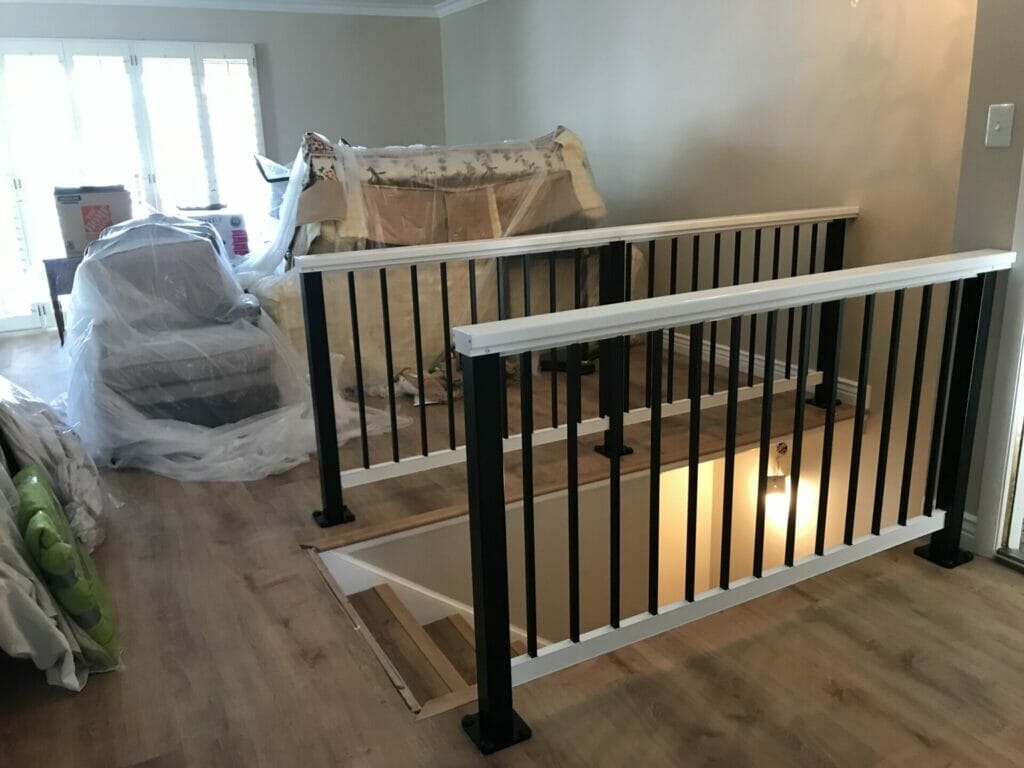Everything to know about railing installation in Fruita

1. Local Climate Considerations:
Fruita experiences a semi-arid climate with cold winters and hot summers. Given this, the choice of material for your railing should be able to withstand temperature variations, UV exposure, and occasional precipitation.
Moisture-resistant materials like treated wood, aluminum, or stainless steel would be ideal. Avoid untreated iron, which can rust quickly.
2. Fruita’s Aesthetic:
Fruita is known for its natural beauty, with its proximity to the Colorado River and nearby national parks. Reflect this local aesthetic by choosing railings that complement the natural surroundings. Consider using rustic designs, or integrating natural elements like stone or wood.
3. Local Suppliers:
Before sourcing materials from far-off places, check with local suppliers in Fruita or nearby Grand Junction. Supporting local businesses not only benefits the local economy but might also get you materials that are specifically suited for the region.
4. Permitting & Regulations:
Fruita, being a distinct town, may have specific regulations or aesthetic guidelines for home improvements. It’s crucial to check with the Town of Fruita’s Building Department or equivalent for specific guidance on railing installations.
5. Local Experts:
If you’re hiring a contractor, it’s beneficial to hire someone local from Fruita or the Mesa County area. They’ll be more familiar with the town’s specific regulations, climate considerations, and can provide insights based on prior installations in the area.
6. Engage the Community:
Fruita has a tight-knit community. Engage with neighbors or local community groups to get feedback or recommendations on your railing project. They might offer insights from their experiences or even recommend skilled local craftsmen.
7. Environmental Considerations:
Fruita’s natural landscape is one of its prime attractions. When installing railings, especially in outdoor areas, be conscious of the environment. Opt for sustainable materials or those that have minimal impact on the environment.
8. Special Events:
Fruita is home to various events, such as the Fat Tire Festival. If your property is near event locations, consider the influx of people during these times. Your railing should be sturdy enough to handle potential increased usage or load, especially if your property has public access or is a business.
While the basics of railing installation remain consistent globally, the context of Fruita, Colorado, with its unique climate, aesthetics, and community vibe, adds layers of consideration. Keeping the town’s specifics in mind will not only ensure a successful installation but also a project that resonates with the local spirit and environment.

Railing Installation Process:
1. Planning & Design:
Measure the area where you want to install the railing. This can be a deck, staircase, balcony, or any other area.
Decide on the type of railing you want (wood, metal, glass, composite, etc.).
Sketch a design or plan, including details like height, length, and post placement.
2. Gather Materials:
- Railing posts
- Railing balusters/spindles
- Handrails
- Fasteners (screws, bolts, etc.)
- Concrete (for post holes, if necessary)
- Finishing touches (paint, stain, etc.)
3. Check Local Regulations:
In Fruita, Colorado, or any place for that matter, always check with the local city or county building department for any specific requirements or permits needed for railing installations. There may be height regulations, material restrictions, or other specific codes to follow.
4. Installation:
- Start by marking post locations based on your design.
- If installing on a deck or ground, dig post holes to the recommended depth (usually around 24-36 inches, depending on the frost line in your area and local codes).
- Secure the posts using concrete. Let it set based on the concrete manufacturer’s instructions.
- Once posts are secure, start attaching the balusters or spindles. Ensure they’re spaced evenly and meet any local spacing requirements.
- Attach the handrails to the tops of the posts. Ensure they’re level and securely fastened.
- If your railing system has a bottom rail, attach it in the same manner as the top rail but closer to the deck or floor surface.
5. Finishing:
If using wood, sand the surface to remove any splinters or rough edges.
Paint or stain the railing if desired, ensuring to use products suitable for outdoor use if the railing is exposed to the elements.
If using metal, consider applying a protective finish to prevent rusting.
6. Maintenance:
Periodically inspect your railing for signs of wear, damage, or looseness.
Clean it as necessary, based on the material used.
For wood railings, consider re-sealing or staining every couple of years to maintain its appearance and protection against the elements.
7. Safety First:
Always use safety equipment when installing railings. This includes safety goggles, gloves, and a helmet if necessary.
If you’re unsure about any step, consult with a professional. The safety of a railing is paramount, and it needs to be installed correctly.
Final Thoughts:
Railing installation can be a rewarding DIY project, but always prioritize safety and adherence to local regulations. If you feel the project is beyond your skillset, it might be wise to hire a professional contractor in Fruita, Colorado, to ensure the job is done right. We at Grand Junction Railing offer installation services for metal railings, glass railings, handrails, wood railings and more. Give us a call today for a free quote!
